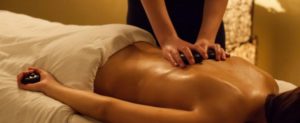Amputee Massage Therapy
Why Massage Therapy for Amputees?
Most treatments for helping amputees manage pain are pharmacologic, or medications, while many of these carry the risk of unpleasant side-effects. Amputees are increasingly starting to turn to complementary and alternative therapies for relief. Amputee Massage Therapy, as a complement to medications, has much to offer clients with amputations.
What Are The Benefits of Amputee Massage Therapy?
Amputee Massage Therapy helps reduce the pain, stiffness, and spasms which occur in the muscles of the amputated limb. Additionally, massage restores flexibility and range of motion to overused muscles an amputee depends on to compensate for the missing limb. Subsequently, an amputee achieves an improved performance of daily functions.
Residual limb pain is a painful sensation or feeling from the remaining part of the limb. By increasing sensory input from the residual limb, massage may override the brain’s perception of pain. Massage therapy can also help develop tolerance of the residual limb to touch and pressure.
Dealing with the effects of scar tissue buildup is an everyday occurrence for an amputee’s injured and surgically repaired limb. How does scar tissue differ from normal tissue? It is avascular (no blood supply), thicker and less elastic than normal tissue. Because of this, scar tissue has limited range of motion with pain, itching, and sensitivity. Massage therapy helps to alleviate the symptoms associated with scar tissue buildup.
Amputee Massage Therapy also provides relief from irritated nerves and neuromas, reduces edema and improves skin health.
The evidence on mood improvement from massage therapy is strong. Amputee Massage Therapy has a profound influence on quality of life by helping to manage depression and anxiety.



